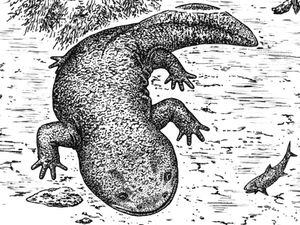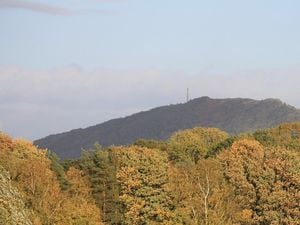168-million-year-old salamander species discovered in Russia
The remains of the ancient amphibian were found at the Berezovsky quarry archaeological site.

A new species of salamander that roamed the Earth around 168 million years ago has been discovered by scientists in Russia.
The remains of the ancient amphibian, believed to have lived during the Middle Jurassic period (176 to 161 million years ago), were found at the Berezovsky quarry archaeological site in Western Siberia.
Based on the fossil analysis published in the journal Plos One, palentologists believe the species, named Egoria malashichevi, belonged to the geologically oldest group of salamanders known as stem salamanders.
Study author Dr Pavel Skutschas, an associate professor of St Petersburg University, who is an expert in Mesozoic vertebrates, said: “Salamanders first appear in the fossil records in the Middle Jurassic, including representatives of both the present-day salamander families and the most primitive ones.
“When they had just appeared, salamanders made efforts to occupy different ecological niches.
“Thus, the stem salamanders filled the niche of large water bodies; while those close to the present-day salamanders found their niche in small water bodies.

“As for the newly discovered salamander, it occupied a middle position, although morphologically, it is closer to the primitive.”
The researchers excavated the fossils from the quarry during various expeditions in the mid-2010s.
With the data gathered from the fossils, the team was able to create 3D reconstructions of the species and describe its internal structure.
Based on their analysis, the researchers believe the E. malashichevi to be around 20cm long.
While E. malashichevi is the most recent species to be found in the quarry, other ancient stem salamanders such as Urupia monstrosa and Kiyatriton krasnolutskii were also unearthed at the site.
The next step, the researchers said, will be to compare the bones from the Berezovsky site with the salamander fossils from the Kirtlington quarry in Oxfordshire, which is the world’s richest archaeological site for mammal fossils from the Middle Jurassic age, about 172 million years ago.
Dr Skutschas believes the salamander fossils from both sites “may be representatives of the same genera”.
He said: “However, to ascertain this, a detailed comparison of the palaeontological collections is required.
“In the coming spring, our colleagues from England will come to St Petersburg to study our research materials.
“We may discover that Urupia and Egoria used to have a very wide habitat, extending across Europe and Asia.”





